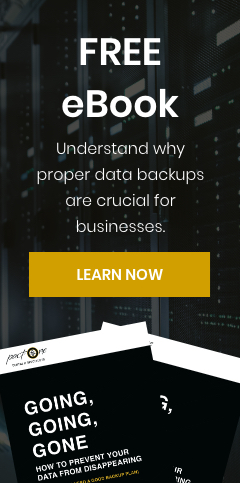Nothing lasts forever. Technology is at the forefront of an ever-evolving world, and with that comes innovation. Therefore, manufacturers must evolve as well. Updates, storage, features, and more play a role in a manufacturer creating new products and sunsetting older versions.
In this article we are defining end-of-life (EOL) technology, identifying the risks involved with continuing to use EOL, and what you can do to ensure your dental practice does not waste precious time and money on outdated technology.
What is End-of-Life (EOL) Technology?
End-of-Life technology is when a manufacturer stops delivering standard support services for a particular product – putting the product to rest. Simply put, once your technology reaches its expiry date it becomes dead in the eyes of the creator. The manufacturer no longer provides technical support, hardware or software upgrades, bug fixes, security patches, or feature development.
What Risks are Associated with End-of-Life Technology?
While your system can still function with the expired technology, it is not recommended. Without continued software and security updates, your system is put at greater risk for viruses and malware.
Obsolete software – such as Windows 7.0 and Windows Server 2012 – can cause all sorts of problems. Here are a few of the risks your dental practice takes when running EOL software:
-
Compromised Security
Your dental practice stores valuable patient information and data, making you responsible and liable for that data. It is a major liability to use EOL technology. EOL technology no longer receives security updates, bug fixes, or patches – leaving your data completely vulnerable.
Your IT infrastructure (servers, desktop computers, laptops, and software solutions) becomes a sitting duck for malicious hackers – who are searching vigorously for those who continue to operate their business in this defenseless manner.
Take your server for example. It provides roadways to multiple users and resources within your system – making it a key target for cybercriminals. Servers continue to be the most impacted asset in an infrastructure. Therefore, this vital piece of technology needs to be up-to-date and secure. As this operating system reaches EOL, hackers start to pinpoint and target those who use it.
A prime example is the Windows Server 2012 which will reach its expiry date in October 2023.
-
Lack of Reliability
If you were a truck driver, would you willingly drive an old truck that is no longer capable of being maintained and has sporadic issues? Absolutely not. That is because your livelihood, clients, and others depend upon the successful delivery of the goods on your truck.
This is exactly what occurs when you use EOL technology in your dental practice. Old software and hardware become less reliable and more susceptible to problems – making system maintenance much more difficult. Take the Windows 7 operating system for example. Dental practices that continue to use this outdated operating system experience more frequent downtime, practice management integration issues, and hardware compatibility issues.
Instead of spending your valuable time and resources on new tools or building better patient experiences, you are having to pay top dollar for fixes and updates no longer covered by the technology manufacturer.
-
Higher Operational Costs
The longer EOL technologies are kept past their supported life cycle, the higher the costs associated with keeping them running. Lost/stolen data, updating and maintaining with third parties, legal liabilities, or loss of revenue from downtime and issues are all costs endured by relying on aging software and hardware.
When the support demand exceeds supply, maintenance costs increase in parallel with the risks of a security breach. It is a price tag you should not have to endure. While the price of a new system can sometimes seem large, having a fully secure and supported system that will not cause your dental practice and patients harm is worth its weight in gold.
Keeping Your Dental Practice's IT Updated
You can avoid these risks by conducting routine check-ups on your dental practice’s IT infrastructure. The last thing you want as growing dental practice is to incur unexpected costs and considerable downtime. Tracking your software and hardware expiry dates will help you better prepare for the future and maintain business flow.
Do not let End-of-Life technology halt your dental practice workflow. A Pact-One Client Success Manager can assess your IT infrastructure and help you prepare for the future – avoiding unforeseen costs and crippling downtime. Contact us today to schedule your complimentary assessment.


